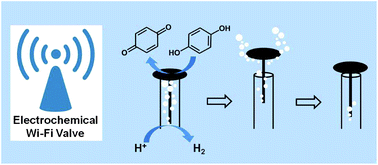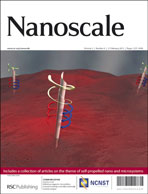Design of a wireless electrochemical valve†
Abstract
The control of motion of small objects is an emerging research area. Their design strongly depends on the strategy chosen to trigger the locomotion, which is typically obtained by either physical or chemical fueling. An ongoing challenge in this field is the remote control of the motion with space and time resolution. In this context, we describe in the present contribution a wireless electrochemical valve based on a chemo-mechanical feedback loop. This valve is driven by bipolar electrochemistry and works in aqueous solutions by converting reversibly an electrical input signal into periodic motion via electrogenerated hydrogen bubbles. We report the design of this very first bipolar valve, together with an analysis of the mechanism leading to the energy conversion, based on controlled production, storage and release of gas bubbles.

- This article is part of the themed collection: Self-Propelled Nano and Microsystems

 Please wait while we load your content...
Please wait while we load your content...